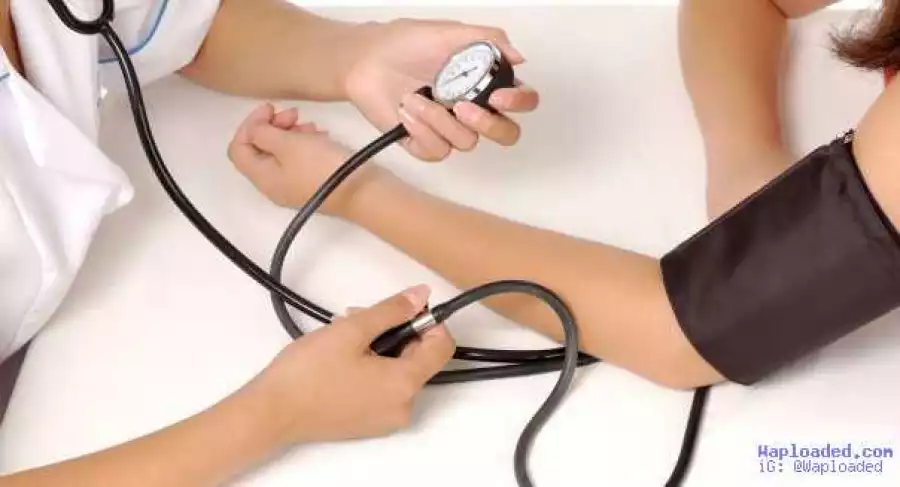10 Silent Killer Diseases That You Must Know About

10 Silent Killer Diseases That You Must Know About
Many diseases fall under the category of “silent killers”. These diseases disguise their warning signs. They are characterized by subtle symptoms that often go undetected or unnoticed. If too much time passes without treating the disease, it may cause serious complications or sometimes death.
Chances are high that people may be living with such dangerous diseases without knowing it.
Hence, it’s very important to spread awareness about these diseases. Also, you should have regular medical checkups with your doctor, so that unexplained or vague symptoms can be diagnosed early and possibly save your life.
10 Silent Killer Diseases Around Us High Blood Pressure
A person suffers from high blood pressure, also called hypertension, when their blood pressure reading is 140/90 mm Hg or higher. According to the Centers for Disease Control and Prevention (CDC), about 70 million American adults, which means 1 out of every 3 adults, have high blood pressure.
High blood pressure is usually associated with stress, smoking, high salt intake, anxiety, excessive drinking, and leading a sedentary lifestyle. Other contributing factors include obesity, genetic factors, use of birth control pills or pain relievers, kidney disease and adrenal disease. Usually, high blood pressure does not present noticeable symptoms. In some cases, it may cause headaches, shortness of breath or nosebleeds, but these symptoms occur when the blood pressure reading is extremely high.
If ignored, high blood pressure may lead to heart disease or even strokes. The only way to identify it is to regularly measure your blood pressure,
either on your own at home or by a doctor. If you find the numbers are too high, start taking steps to control it. Blood pressure can be measured by a blood pressure monitor, also called a sphygmomanometer. If it reads 140/90 mmHg or more, consult your doctor and be sure to take any prescribed medicine as directed to control it.
Coronary Artery Disease
Coronary artery disease (CAD) is a common heart disease caused by plaque buildup in the walls of your arteries. Too much plaque buildup narrows the arteries over time, which could partially or totally block the blood flow throughout your body. Over a period of time, CAD can also weaken your heart muscle, leading to heart failure.
Major risk factors for CAD include obesity or being overweight, a family history of heart disease, a poor diet, smoking and lack of physical activity.
As CAD does not cause any immediate signs and symptoms, it can go unnoticed until you have a heart attack. Opt for regular health checkups for timely diagnosis.
Eat a diet low in sodium and fat, avoid smoking, exercise regularly and take medications after consulting your doctor to reduce your risk of CAD or other heart conditions.
Diabetes
Diabetes is a condition that requires constant monitoring. There are two types of diabetes.
*.In Type 1 diabetes, the body does not produce any insulin.
*.Type 2 diabetes is a metabolic disorder in which your body is unable to make enough insulin, or cannot use it properly.
According to the International Diabetes Federation, an estimated 387 million people worldwide have diabetes and 1 in 2 people do not even know that they have it.
This is why diabetes is considered a silent killer. Some common symptoms include excessive thirst, hunger, sudden weight loss, frequent urination, tiredness, slow-healing sores or cuts, and blurry vision.
The exact cause of diabetes is not known.
However, genetics, obesity, a poor diet and lack of exercise appear to play important roles in developing this disease.
Uncontrolled diabetes can lead to a variety of serious complications. These include heart disease, kidney disease, limb amputation, strokes, and vision loss.
If you have a high risk of developing diabetes and notice any of the common symptoms, get your blood glucose levels checked. When diagnosed with diabetes, treatment may include taking insulin or other medications.
Fatty Liver Disease
Fatty liver disease is a condition in which the liver has difficulty breaking down fats, which causes a buildup in the liver tissue. There are two types of fatty liver disease– alcoholic liver disease and nonalcoholic fatty liver disease.
As the name suggests, alcoholic liver disease is caused by excessive alcohol consumption. The exact cause of nonalcoholic disease, is not known yet.
It usually runs in families. Fatty liver is described as when more than 10 percent of the liver is fat and the impaired liver functioning has occurred in someone who drinks little or no alcohol.
During the initial stage, fatty liver disease usually does not cause any noticeable symptoms, rather the disease is harmless at this stage.
Overtime, the fat that accumulates in the liver can cause inflammation and scarring. This leads to a more serious form of the disease.
You may experience dull or aching pain in the top right of your abdomen as well as fatigue, loss of appetite and a general feeling of being unwell if you have a fatty liver.
You are at a higher risk of suffering from this condition if you had gastric bypass surgery. Other risk factors include high cholesterol, obesity,
polycystic ovary syndrome, sleep apnea, Type 2 diabetes, underactive thyroid and underactive pituitary gland.
If you suspect you have a problem in your liver,
consult your doctor. A simple blood test or ultrasound can help diagnose this problem at an early stage.
Osteoporosis
Osteoporosis is a disease that leads to bone deterioration, making them thin and brittle. It is also a “silent disease” that often has no symptoms in the early stages.
Thus, the early stages of osteoporosis are difficult to detect and diagnose. On top of that, this disease can strike at any age.
Often, the first sign is a painful bone fracture. A few signs of osteoporosis are loss of height over time, back pain, a stooped posture and bone fractures that occur even due to a minor fall.
Risk factors include being female, post-menopausal and being of Caucasian or Asian descent. Other risk factors include family history, poor diet, lack of exercise, smoking, certain medications, and a small-boned frame.
If you are at risk for osteoporosis, consult your doctor about having a bone mineral density test.
To prevent osteoporosis, you should do regular exercise, eat healthy foods (especially calcium and vitamin D-rich foods), limit alcohol
consumption and avoid smoking.
Colon Cancer
Colon cancer is also a common silent killer. It is the third most common cancer in the U.S., with thousands of people diagnosed each year.
A tumor in the rectum or colon rarely develops overnight. It often starts as a small growth known as a polyp. Most of these polyps are noncancerous, but when ignored or left untreated, some of them can turn cancerous after a few years.
Early detection and removal of cancerous cells in the colon can cure the cancer in 90 percent of cases. But the key is to have colorectal screenings done at regular intervals to detect polyps and get them removed.
Although colon cancer won’t give you early warning signs, if you notice more constipation,
diarrhea, blood in your stool, unusual gas or abdominal pain, low blood count, unexplained weight loss, vomiting and fatigue, get a simple checkup done to address the cause of the problem and potentially save your life.
Skin Cancer
Nonmelanoma skin cancer develops slowly in the upper layers of your skin due to overexposure to ultraviolet (UV) radiation from the sun or sources of indoor tanning, such as tanning beds and sunlamps.
A family history of this cancer, pale skin that burns easily, and a large number of moles or freckles may increase your risk. Men and people over 40 years of age are at even higher risk.
Usually a red lump or scaly patch on your skin that doesn’t heal even after a few weeks is the first sign of nonmelanoma skin cancer.
Consult your doctor if you see any skin abnormality that hasn’t healed after four weeks. The specialist may perform a biopsy to confirm whether it’s cancerous.
You should avoid overexposure to UV light, sunlamps and tanning beds, use a sunscreen, limit going out in sun during peak hours, and get regular checkups of your skin to reduce your risk of nonmelanoma skin cancer.
Hepatitis
Hepatitis refers to an inflammatory condition of the liver and is a viral infection that affects thousands of people globally. Different hepatotropic viruses cause different types of this disease, including hepatitis A, B, C, D and E.
Hepatitis A and E are caused by eating contaminated food or drinking contaminated water. Hepatitis B, C and D are contracted through transfusions of contaminated blood, sexual contact and during childbirth.
Hepatitis can also be caused by excessive alcohol consumption and autoimmune diseases.
The virus may be present in the body for several years without causing any symptoms. However, it may cause symptoms like fatigue, muscle aches, jaundice, pale stools, low-grade fever, vomiting and diarrhea. If you have any of these symptoms, consult your doctor for a simple blood test or liver biopsy to check for hepatitis.
If you are at a high risk of hepatitis, ask your doctor about getting a hepatitis vaccination.
Cervical Cancer
According to the World Health Organization,
cervical cancer is the fourth most common cancer and cause of cancer mortality in women, especially in developing countries.
This cancer occurs in the cells of the cervix, and usually causes no symptoms during its early stages. If not diagnosed on time, the cancer soon spreads to the bladder, liver, intestines or lungs.
At later stages, one may experience pelvic pain or vaginal bleeding.
Cervical cancer is caused by human papillomavirus (HPV), which spreads through sexual contact. In most cases, a women’s natural immune system is able to fight this infection. But certain types of HPV may lead to cervical cancer.
Women who smoke, have multiple sex partners, have many children, are overweight, use birth control pills for a long period or are infected with the human immunodeficiency virus (HIV) are athigher risk of developing cervical cancer.
Usually normal cells in the cervix take several years to turn into cancer cells. So, if you experience even mild symptoms, consult your doctor about getting a Pap smear test. It is very effective in screening for cervical cancer.
Ovarian Cancer
Until recently, doctors viewed ovarian cancer as the deadliest silent killer in women, as it is usually discovered after spreading beyond the primary tumor site. But new evidence shows
symptoms can indeed appear early on.
The warning signs of ovarian cancer mock common conditions including irritable bowel syndrome, stress and depression. If you have any symptoms (see below) for longer than a couple weeks, call your doctor. You’ll undergo a physical exam and perhaps a blood test,
ultrasound or biopsy. Women diagnosed in the early stages of ovarian cancer have a 5-year survival rate of nearly 93 percent.
Symptoms of ovarian cancer
*.Bloating
*.Increased abdominal size
*.Abdominal pain
*.Pelvic pain
*.Difficulty eating
*.Feeling full quickly







![The Soldier King Legend (2020) [Chinese]](https://www.memesng.com/r/storage.waploaded.com/images/62e47acf7df7726697c240f188cdd024.jpg?w=50&ulb=true&ssl=1)


![Smart Casuals (2024) [South Africa]](https://www.memesng.com/r/storage.waploaded.com/images/fea3ef4f271b6344bb279e96b80a8df1.jpg?w=50&ulb=true&ssl=1)






![Joeboy ft. Qing Madi - Adenuga [Video]](https://www.memesng.com/r/storage.waploaded.com/images/be43d65fc0c01972195bd30e886370f6.jpg?w=50&ulb=true&ssl=1)






![Suji and Uri (2024) [Korean] (TV series)](https://www.memesng.com/r/storage.waploaded.com/images/394b198e59e3725ad4fa904e225d43dc.jpg?w=50&ulb=true&ssl=1)
![In Cold Blood (2024) [Korean] (TV series)](https://www.memesng.com/r/storage.waploaded.com/images/64d0b2050777280ade35b2797b34c503.jpg?w=50&ulb=true&ssl=1)

{{comment.anon_name ?? comment.full_name}}
{{timeAgo(comment.date_added)}}
{{comment.body}}
{{subComment.anon_name ?? subComment.full_name}}
{{timeAgo(subComment.date_added)}}
{{subComment.body}}